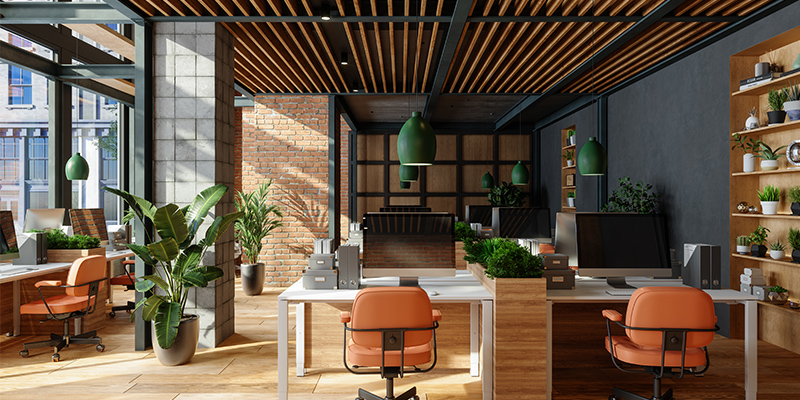Over the past two years, office owners have hurriedly adapted to new workplace norms and partnered with businesses to foster dynamic real estate strategies. Landlords and their tenants have ushered in this era in office – but developers have an equally important role to play in the transformation. Today, organizations and their employees are reimagining the office as a center for socialization and collaboration, built with sustainability in mind and supported by intelligent technologies. Developers are meeting these needs with novel building designs that support modern workstyles and put people first. Office projects breaking ground today need to plan to deliver human-centric experiences of the future. As developers plan ahead, these five trends are informing the next phase in office design.
Premium quality spaces
With remote work in play, the office needs to provide employees with a value proposition that invites them in. In JLL’s 2022 Future of Work Survey, 77% of companies said that they are investing in quality office space to incentivize employees to work from the office. Our research forecasts a flight to quality over the next three years, calling it “a clarion call for employees to take action” – and companies are willing to pay extra for it. The Wall Street Journal reports that owners of top-tier offices have been able to maintain strong rents even as overall demand for office product wanes.
Design to foster community engagement
The office is expanding from a place for independent work to a place where people come together. More than half of companies believe a vital purpose of the office is now to facilitate collaborative working, and it is inspiring new office designs and layouts, with more communal areas for partnership, socialization, education and mentorship. Offices are now meant to promote a free exchange of ideas – and developers are tasked with translating that experience into an inviting office design that centers around the individual while also reflecting the company’s culture and values.
Accommodate flexible work patterns
To accommodate employees operating on a hybrid work schedule – a model that 53% of organizations have permanently adopted – companies are investing boldly in flexible office space. Research shows that 43% of companies plan to expand their flexible footprint, and more than half of those companies will lease flexible space from a third-party operator. This is a tremendous opportunity for developers to outfit buildings with flexible space options so companies can augment their existing office portfolio. Developers can create coworking spaces that can either be operated by a third-party company or directly by a landlord, a move that some major office owners have already made.
Supporting sustainable strategies
ESG might just be the most pervasive buzz word in the corporate sector today – but it isn’t all talk. There is real action behind environmental initiatives and green strategies. Companies have made public and transparent commitments to achieve decarbonization through real estate – and many are paying what JLL calls a “green premium” for office spaces that help achieve these targets and benchmarks. More than half of companies are already paying a higher rate for real estate that meets environmental objectives and only 7% of companies would not consider paying a higher cost for a greener property. Projects with green credentials, like a LEED or BREEAM certifications, will immediately get attention for prospective tenants, but developers are also meeting green objectives through adaptive reuse, efficient building operations and investing in health and wellness programs.
Integrating intelligent technology systems
Companies are increasingly turning to technology to optimize performance and make better, more informed decisions. Over the next three years, technology adoption will continue to accelerate. Companies plan to adopt smart contracts, advanced analytics, industrial robots for tasks like cleaning and security, and immersive technologies – and employees expect these technology capabilities. Touchless technology, flexible space management and workplace apps are already appearing in new developments, but over the next three years, health and wellness technology, data modeling, predictive management systems and sensors that track workplace movement will become standard. These features should be a baseline for technology integration in new construction projects.
After a period of rapid change comes an opportunity to pause and to think strategically about the future. CRE leaders are now at that moment. The next three years will be a time of evolution for the industry. There is a window of opportunity between now and 2025 for decision-makers to bring their action plans to life and to meet the expectations of diverse stakeholders such as employees, executive leaders, shareholders and local communities. The pandemic has permanently changed the standard 9-to-5 model, and the office is changing, too. Organizations are embracing environments that cultivate progressive workplace strategies and support employees – and developers are innovating properties that make it a reality.













